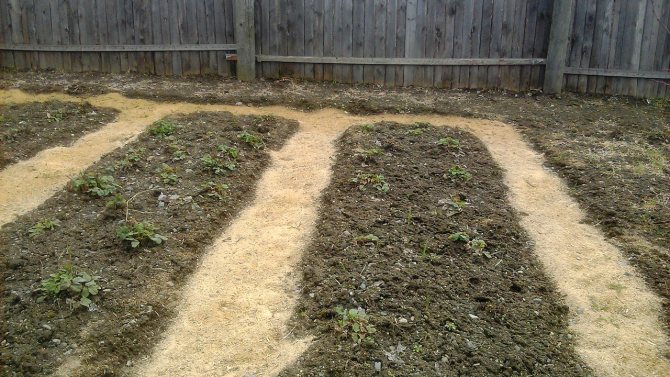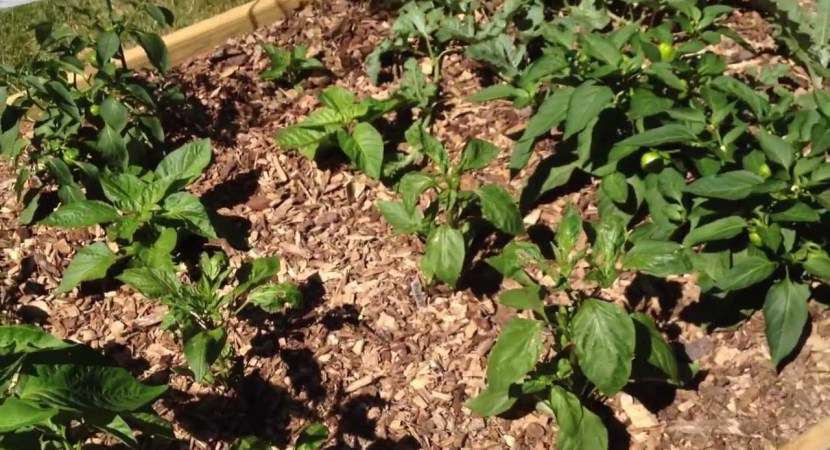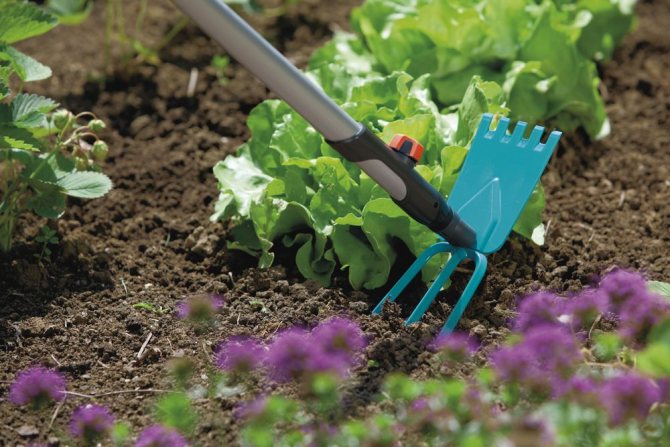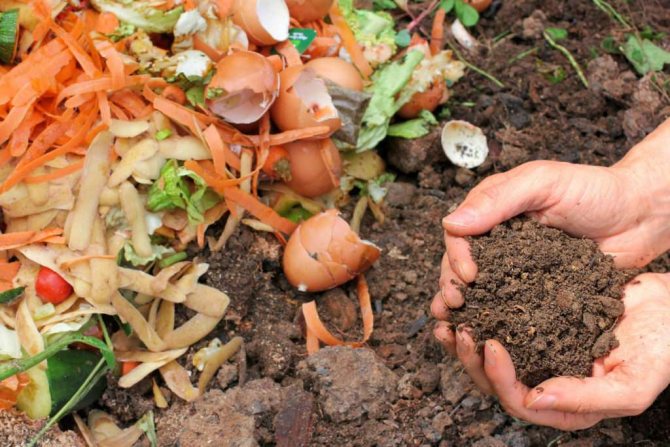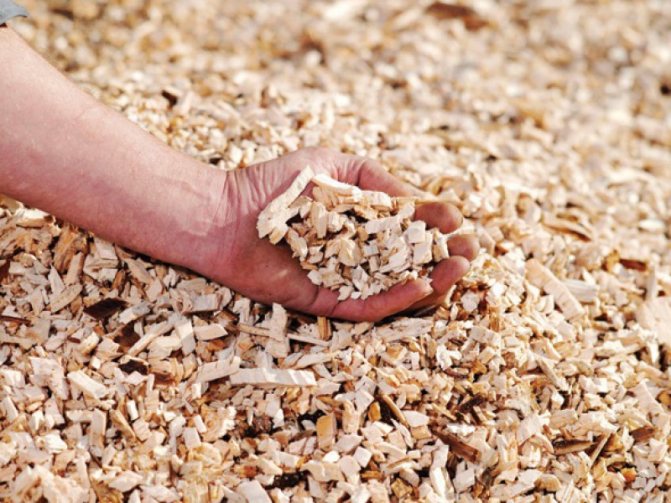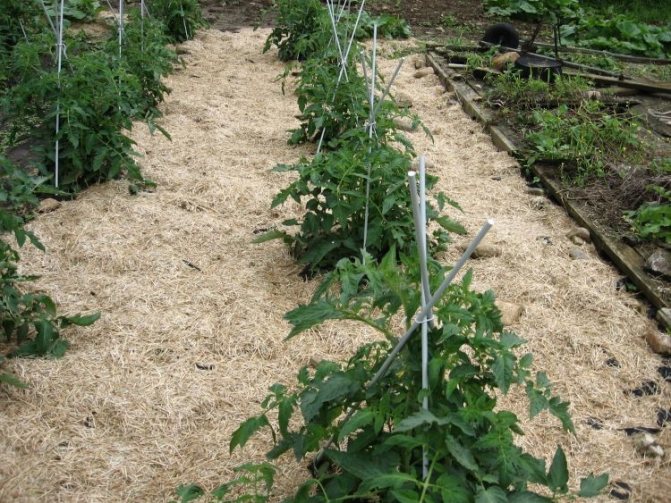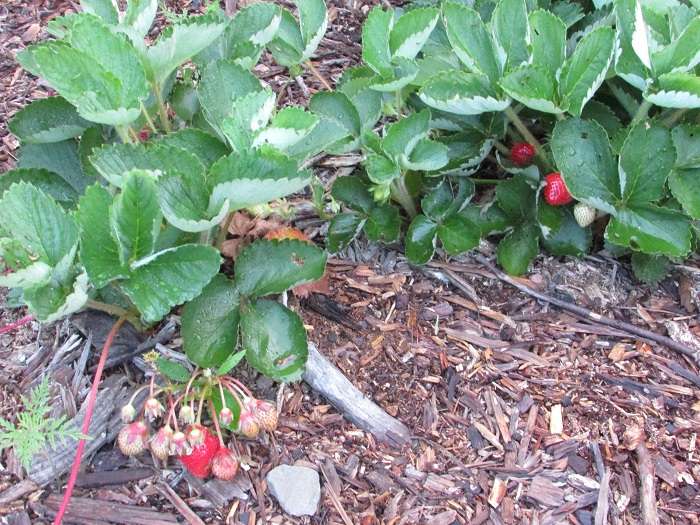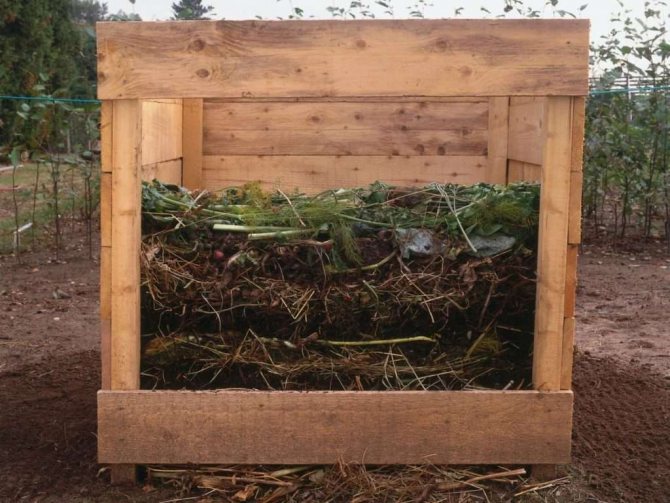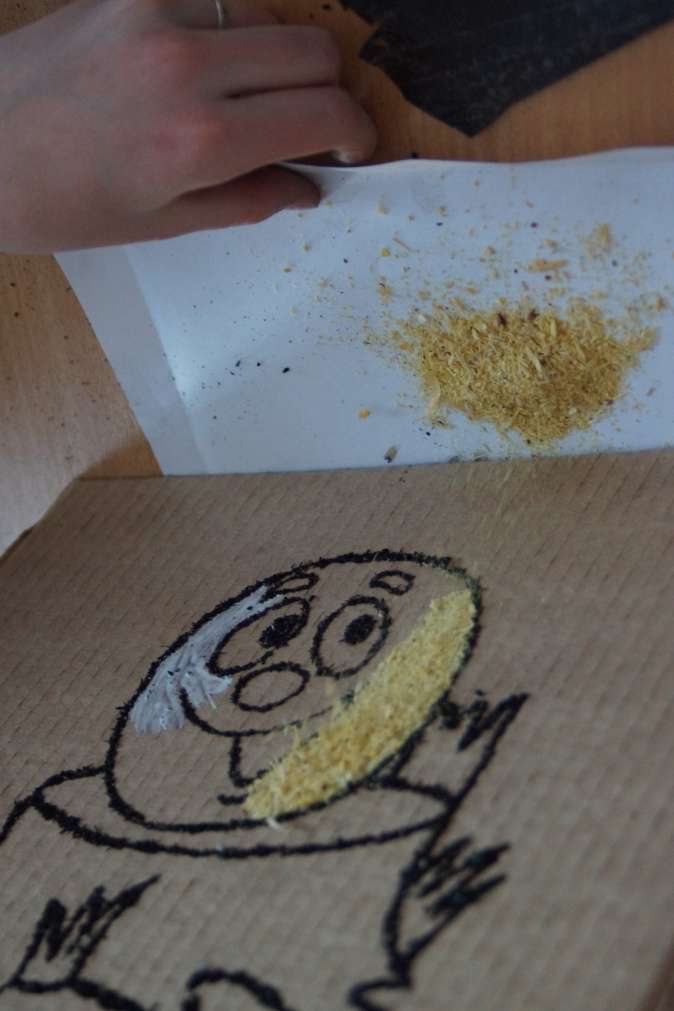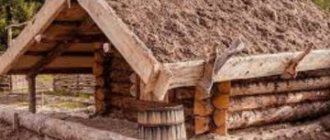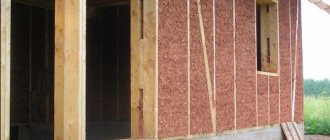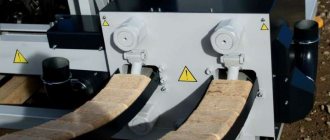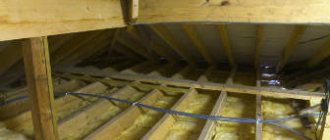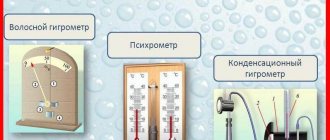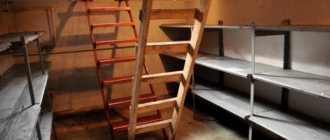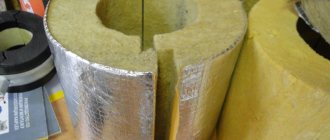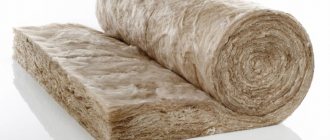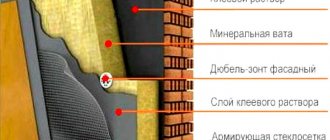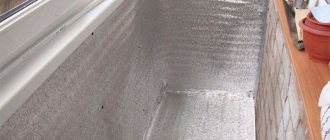Sawdust: methods of application
After certain processing, sawdust is suitable for completely different areas of application:
- Sawdust is used as a type of fuel in solid fuel boilers. They are especially convenient in the form of pellets or fuel briquettes.
- Sawdust is widely used for insulation of premises. Such insulation, unlike most synthetic counterparts, is not afraid of sudden changes in temperature and humidity.
- They are also used for home smoking. Experts will confirm that the best quality of finished products is guaranteed when sawdust is used as a combustible material.
- Sawdust is also appreciated by gardeners, due to its ability to accumulate and retain moisture for a long time, to suppress the growth of weeds, they are suitable for soil fertilization.
This is not a complete list of options for the useful use of sawdust in the household, gardening or construction. And they are needed mainly in dry form.
Where can you use sawdust in the garden
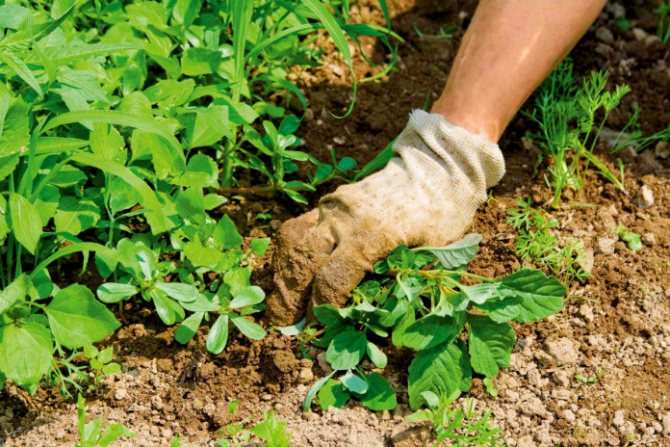
Experienced gardeners use wood shavings in the country in many areas, depending on the properties of sawdust, its moisture content, the type of wood from which it is produced.
Use sawdust in your summer cottage for the following purposes:
- to improve the structure of the soil substrate. Mixing soil with small or medium-sized shavings makes the soil loose, which improves its supply of oxygen to the air, improves water permeability. After adding the material to the garden, the plantings will not need frequent loosening;
- to retain moisture. Adding sawdust to the garden beds while digging will help keep water in the substrate longer. The chip material absorbs excess liquid and gradually evaporates it. The root system of crops will be able to receive moisture in the lower layers from moist wood particles;
- to combat weeds. Pour at least 5 cm of sawdust into the aisles and furrows to prevent weeds from germinating. The dense cover of small or coarse shavings is a powerful obstacle to plants. Sprinkle the material on the strawberry beds, root crops (carrots, beets, radishes, radishes, etc.) around the berry bushes. Leave a space with a diameter of 30-40 cm around the bush of a useful culture in order to fully care for the seedling;
- to preserve the aboveground harvest. Protect crops that produce berries or fruits close to the ground. A layer of sawdust poured under bushes of zucchini, strawberries, cucumbers, tomatoes, etc. will exclude contact with the ground, pollution, damage by caterpillars, infection with a number of fungal diseases;
- warming plants. Before freezing, cover berry bushes, tuberous crops, rhizomes of trees and shrubs with sawdust shavings. Chopped wood will reliably protect plantings during winter;
- as a top dressing. During the autumn digging of the beds, add 1 bucket of rotted sawdust for each square meter. On the fertilized territory, friendly shoots and a rich harvest of crops that prefer acidified soils will give;
- for raising the beds. Raise low-lying ridges or vegetable gardens with high water tables. Dig trenches 20-30 cm deep, cover the bottom with old straw, mown hay, fallen leaves. Pour chopped wood shavings on top. Place the garden soil on top. Organize boards, slate, metal, fiberboard or chipboard. The sawdust substrate will not only absorb excess water, but also, when overheated with other organic matter, will generate heat, forming a nutrient medium for plants;
- as a compost component.Add sawdust to the compost heap with cow dung, foliage, grass cuttings to obtain a multifunctional nutrient fertilizer after decomposition for application to greenhouses and beds. Cover the layers of overheating organic matter with a durable covering material and spill abundantly with water every week;
- to retain moisture. Sawdust mixed with ash or urea, poured between beds and rows of crops, effectively retains water and eliminates evaporation from the soil;
- as mulch. Mulching berry bushes, tuberous flowers or other crops with sawdust will reliably protect the root system from freezing, pest damage, soil from erosion and wind erosion. Use shavings for plants that prefer an acidic soil.
Important! Do not use sawdust on the beds if the soil is low in nitrogen. The introduction of the material into the soil reduces the nitrogenous component. Stir the shavings with wood ash, urea, or chalk lime. This neutralizes acidic chemical reactions.
Fresh or rotted sawdust is a great organic material that should be used wisely. Consider the high content of cellulose and lignin in the shavings, which increase the acidity of the soil. Apply sawdust top dressing as fertilizer or for loosening in the fall. The additive before planting will have a depressing effect. During the period of active growth of seedlings, crops need nitrogen, which sawdust draws from the soil substrate.
How and with what you can dry sawdust
Drying is the evaporation of water from sawdust. There are the following techniques for the selected raw materials:
- Aerodynamic way
- Vacuum method
- Infrared method
- Super high frequency (microwave) method
- Condensing method
- Sawdust drying with convective heat exchange
At the moment, the aerodynamic method and convection dryers (using drum installations) are recognized as the most optimal.
IMPORTANT!
All drying plants are fire hazardous. All conditions of their installation and use should be carefully observed.
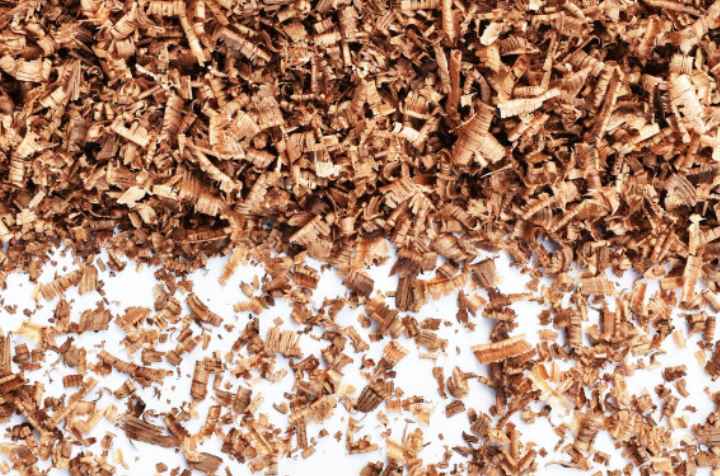

Where is used
We have compiled a short a list of what can be made from sawdust and attached links to relevant articles in which this or that method of application is described in more detail:
- Fertilization of the garden, backfilling of paths, mulching and protection of plant roots from the cold.
- Top-down for rabbits, chickens and small ruminants.
- Top-up for hamsters, birds, dogs, cats and small domestic animals.
- Growing mushrooms.
- Smoking various products.
- Crafts, papier-mâché and appliques.
- Homemade stylish wallpaper.
- Insulation of walls, ceilings and floors.
- Heating.
- Production of fuel pellets and briquettes.
- Production of sawdust concrete and wood concrete blocks.
- Biofuels (industrial alcohol).
- Pyrolysis gas suitable for heating boilers and vehicles.
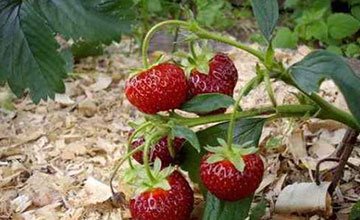

You can read more about these and other ways of using sawdust in this article (Using sawdust).
We have compiled a table from which you can find out what types of sawdust used for certain operations and actions.
We have included in the table all the most famous ways the use of sawdust, as well as white sawdust of various types of wood. So that all types of sawdust fit into the article, we replaced them with the initial letters of the name of the species:
- BUT - Acacia;
- B - Beech;
- Br - Birch;
- D - Oak;
- E - Spruce;
- TO - Cedar;
- L - Larch;
- P - Fruit trees;
- FROM - Pine.
In addition, we have used graduation of effective use from 1 to 5, where 1 - cannot be used due to extremely negative consequences, and 5 - provide the best result when applied.
| Application | Wood species | ||||||||
| BUT | B | Br | D | E | TO | L | P | FROM | |
| Heating with sawdust | 5 | 4 | 5 | 5 | 1 | 1 | 1 | 3 | 1 |
| Production of fuel pellets and briquettes | 5 | 4 | 5 | 5 | 2 | 2 | 2 | 3 | 2 |
| Creation of sawdust concrete | 5 | 4 | 4 | 5 | 5 | 5 | 5 | 3 | 5 |
| Warming with sawdust | 4 | 3 | 4 | 5 | 5 | 5 | 5 | 4 | 5 |
| Use in the pulp and chemical industry | 4 | 5 | 5 | 5 | 5 | 5 | 5 | 5 | 5 |
| Paper making | 5 | 5 | 5 | 5 | 5 | 5 | 5 | 5 | 5 |
| Filling paths in the garden | 5 | 5 | 5 | 5 | 5 | 5 | 5 | 5 | 5 |
| Mulching plants | 5 | 5 | 5 | 5 | 4 | 4 | 4 | 5 | 4 |
| Making humus | 5 | 5 | 5 | 5 | 5 | 5 | 5 | 5 | 5 |
| Growing mushrooms | 5 | 5 | 5 | 5 | 5 | 5 | 5 | 5 | 5 |
| Homemade biofuels and alcohol | 5 | 5 | 5 | 5 | 4 | 4 | 2 | 5 | 4 |
| Industrial production of biofuels and alcohol | 5 | 5 | 5 | 5 | 5 | 5 | 5 | 5 | 5 |
| Getting pyrolysis gas | 5 | 5 | 5 | 5 | 3 | 4 | 4 | 5 | 3 |
| Creation of fiberboard, chipboard and other building materials | 5 | 5 | 5 | 5 | 5 | 5 | 5 | 5 | 5 |
| Sprinkle for hamsters and other pets | 5 | 5 | 5 | 5 | 3 | 4 | 3 | 4 | 3 |
| Litter for chickens, rabbits and other animals | 5 | 5 | 5 | 5 | 4 | 5 | 4 | 5 | 4 |
| Use to create crafts | 5 | 5 | 5 | 5 | 5 | 5 | 5 | 5 | 5 |
| Smoking | 5 | 4 | 4 | 4 | 1 | 1 | 1 | 5 | 1 |
Aerodynamic drying
Drying of sawdust with this method is done with hot air.
In such a drying installation, in this case, several parts are included:
- Heat generator
- Fan
- Drying line
- Sifter
- Cyclone
- Bake
The advantage of this method is the comparatively smaller installation size. And the disadvantages are the complexity of the technological execution, as well as the preliminary execution of a complex of calculations, taking into account the surface area of the processed material, its physical characteristics, parameters and speed of the dryer.
IMPORTANT!
When choosing a dryer, pay attention to its technical parameters. The higher the volume of the dryer, the more power of the heat generator should be.
Absolute moisture content of wood
Let's consider the concepts of absolute and relative humidity.
Let's take a wooden block. Absolute moisture is the ratio of the mass of the internal liquid to the mass of the fully dried bar. The value is calculated by the formula: W = (m - m0) / m0 x 100, where, (m) and (m0) are the mass of the wet and dried bar. GOST 17231-78 interprets this value simply as "moisture". But this concept is inconvenient to use in calculations, since the amount of water refers specifically to the dry mass, and not to the total weight. As a result, discrepancies arise: for example, 1000 g of wood contains 200 g of moisture, but the absolute moisture is calculated as 25%.
Drum Drying
The production of freeze-dried fuel raw materials from raw sawdust is possible using hot air drying, blown by fans. The water from their sawdust evaporates during convective heat exchange.
In order for the sawdust to dry better, ensure their continuous contact with the coolant: air heated in the heat generator or gases from the furnace.
The most successful solution for the implementation of this option is the use of a drum-type dryer connected to a heat generator. As the drum rotates, a fresh portion of sawdust is constantly introduced into the hot air jet zone. Special paddles inside the drum stir sawdust, moisture evaporates naturally into the environment.
Drying drums are the cheapest of all sawdust drying options with excellent efficiency and ease of execution and operation. The installation is easy to assemble and independently with your own hands, having the appropriate schemes. The disadvantages of this method include the relatively large dimensions of the drying unit, which can complicate transportation if such a need arises.
Wood relative humidity
This is a more convenient concept for calculations, since it reflects the ratio of the mass of the internal fluid to the total mass of the bar. The calculation formula is the simplest:
Wrel. = mwater / msample x 100.
This formula is used in the calculation of a heating engineer to determine the volume of water evaporated from firewood. According to him, at a moisture content of 20%, a 1000 - gram bar contains 200 grams of moisture and 800 grams of dry fibers - quite a logical result.
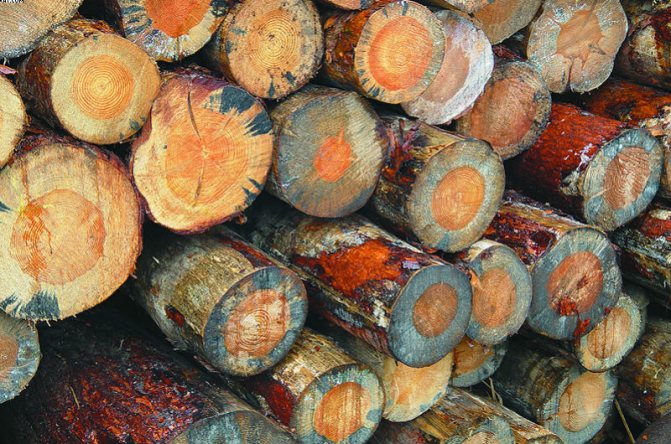

Vacuum drying
The technology of vacuum and microwave drying has a common characteristic - water is evaporated at a temperature higher than the boiling point of water. When drying using the vacuum method, there are two phases of the transformation of water: the transition from liquid to vapor, from vapor to liquid.
This method involves the transfer of steam and water to the outer surface of the raw material, evaporating the steam escapes into the atmosphere.When water evaporates from the surface of the raw material, its temperature drops sharply to the temperature around, the drying process immediately slows down. To accelerate it, it is necessary to destroy the boundary upper layer on the surface of the raw material or to noticeably narrow it down.
Today there is a dominance of the following types of vacuum drying chambers:
- - with heating the material in a cyclic way;
- - with heating of raw materials by contact method.
Note that in the first case, in the chambers, first of all, the raw material is heated, and then it is evacuated. Several such cycles are repeated until complete drying. Heat is transferred convectively.
The tangible disadvantages of the vacuum method include the long duration of the drying process, high energy consumption for constant heating / cooling of raw materials and drying chambers.
Method for determining the moisture content of materials such as sawdust
And to the AUTHOR'S WITNESS, the definitions were published on July 19, 1938 Published on 31 a The proposed method is designed to quickly determine the moisture content of materials, for example, sawdust, going to the backfill of leather for their removal, so that the analysis of the content. The drying of moisture in the sawdust made it possible to correct this moisture in the production process of leather processing. There are already known methods for determining the moisture content of various materials by treating a sample of the test material with alcohol, then removing the latter from the sample, for example, by filtering or burning and weighing a dry sample. The proposed method differs from of these known methods in that to free the sample of the test material from the alcohol residues, it is treated with ether or a similar volatile solvent. The determination of moisture according to the proposed method is carried out using a simple installation shown in the drawing. It consists of two small Bunsen flasks, c and g, connected with each other glass triple materials, aprimary saws in the NKLP for 2130. est of 1939, in order to be able to simultaneously carry out several determinations or several different analyzes, which is especially advisable for materials with uneven moisture content, such as sawdust for pouches of leather with a moisture content of up to 40 - 45%. To determine the moisture content of such sawdust, a sample of 1 - 12 - 1.5 g weighed on an analytical balance is taken either into a previously weighed Guch crucible, the bottom of which is covered with dried filter paper, or into a dried folded filter, and before the analysis, it is useful to keep the filters in a desiccator over sulfuric acid or calcium chloride to remove traces of moisture from them. drawing) it is inserted with the help of a soft rubber tube b into the Bunsen flask c. If the sample is taken into a previously weighed folded filter g, then the latter is placed in a glass funnel e, and cotton wool is inserted into its widened part e, in order to avoid filter breakthrough during suction 1 air from the flasks, Funnel d is inserted into the Bunsen flask with a rubber stopper g. Then the test material is moistened with several milliliters of 95 N ethyl alcohol and air is slowly sucked out of the flasks with a water jet pump j. The next time the crucible a or filter is filled with alcohol d vacuum in flasks It takes 60 to 70 to 75 milliliters of alcohol to extract moisture from the weighed portions of the above weight. After the material is dried with alcohol, crucible a or filter d is filled with ether to remove alcohol. This removal is initially carried out without vacuuming the air, and only with subsequent fillings can the ether be sucked into the slightly rarefied space of the flask, The finally dried material is placed together with the crucible a or in a separate sample on the filter d into the thermostat,heated to a temperature of 75 - 80 or even 100 for the final removal of the ether. The dried sample together with the crucible a or filter g after cooling is weighed with an accuracy of 0.001 g, The calculation of moisture is carried out in the same way as in the usual thermostat determination of moisture, Waste alcohol and ether collected in separate flasks and for reuse are subjected to distillation in a conventional manner. The entire analysis lasts no more than 25 minutes. materials, for example sawdust, by treating a sample of the tested material with alcohol, then removing the latter and weighing it dry on weights, which differs in that to free the sample of the test material from residues of alcohol. This is treated with ether or the like volatile solvent.
Look
Drying complex for wood from ALB Group
ALB Group produces drying complexes AVM
for wood waste pelleting and briquetting lines. The main element of the complex is the ABM drying drum, which in one pass can reduce the moisture content of fine wood from 50% to the required 8-12%. Drying occurs as a result of tedding the raw material in the drum and circulating hot air in it. The operation of the AVM drum is provided by connecting a heat generator or a furnace block, a smoke extractor and an aspiration system are connected to the complex.
Models ABM 0.65 and 1.5
with a capacity of up to 1200 and 2500 kg per hour are the most demanded equipment for drying shredded wood.
Find out more about our drying complexes by calling+7
or by leaving your contact details in the form!

